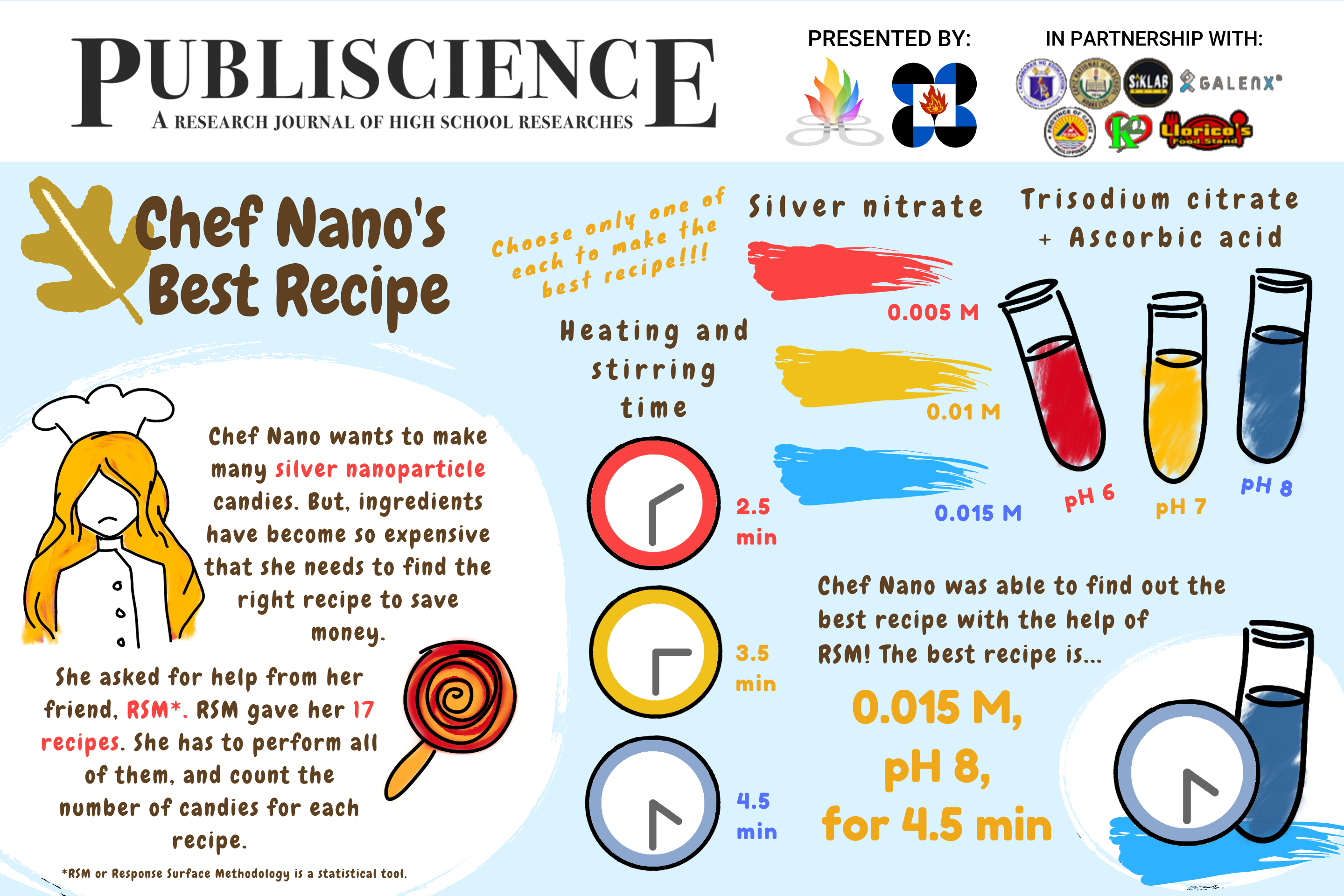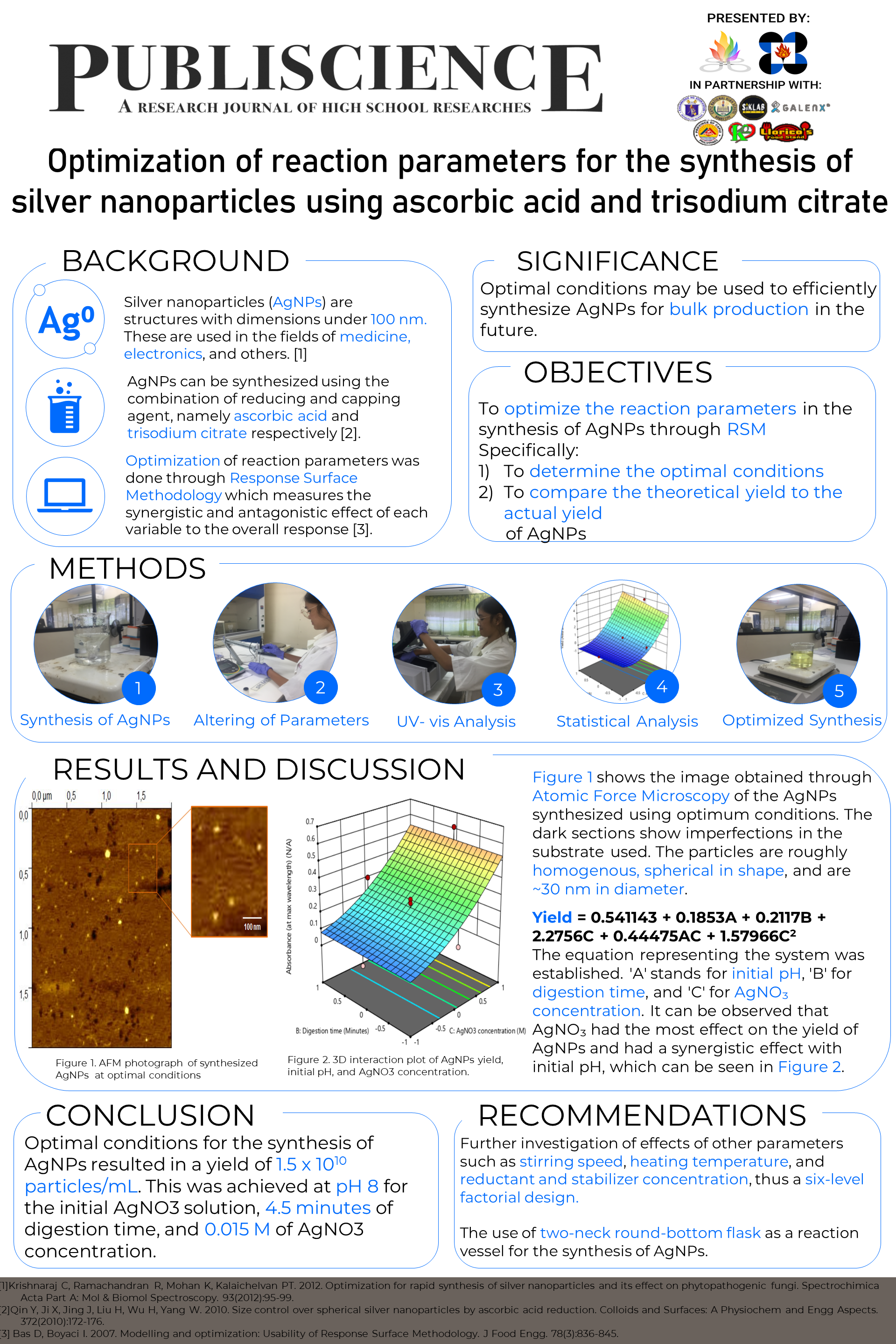Optimization of reaction parameters for the synthesis of silver nanoparticles using ascorbic acid and trisodium citrate
LUKE DANIEL G. SOCRATES, MARY JANE O. TANG, SETH WILLIAM C. TIONKO, MIALO L. BAUTISTA, and MICHAEL PATRICK M. PADERNAL
Philippine Science High School – Western Visayas Campus, Brgy. Bito-on, Jaro, Iloilo City 5000, Department of Science and Technology, Philippines
Abstract
Silver nanoparticles (AgNPs) have excellent properties and various applications in several scientific fields. The present study aimed to optimize the reaction parameters for AgNP synthesis using ascorbic acid and trisodium citrate, through response surface methodology (RSM). Three parameters were evaluated – initial pH of silver nitrate (AgNO3) solution, digestion time, and AgNO3 concentration. Absorbances at peak wavelength of the resulting solutions were analyzed using an ultraviolet-visible (UV-vis) spectrophotometer and was taken as a measure of yield. The effects and combined interactions of the parameters to the yield, and the optimal conditions for synthesis were determined using RSM. AgNO3 concentration was found to be the most significant determinant of the yield. Atomic Force Microscopy (AFM) showed that the synthesized AgNPs at optimal conditions were spherical and about 30 nm in diameter. It is believed that these parameters are suitable for bulk production of AgNPs for various applications in several scientific fields.
Keywords: absorbance, yield, response surface methodology (RSM), UV-visible (UV-vis) spectrophotometry, atomic force microscopy (AFM)

